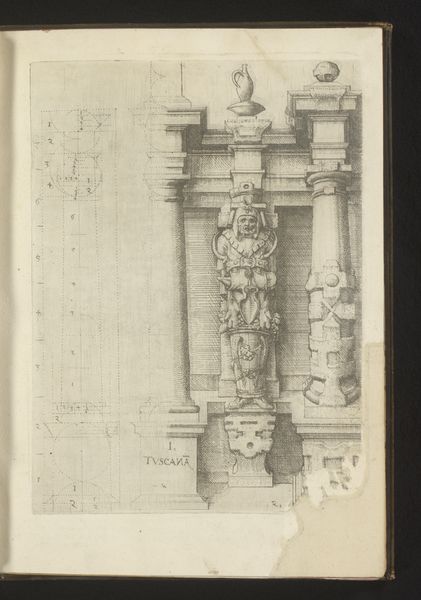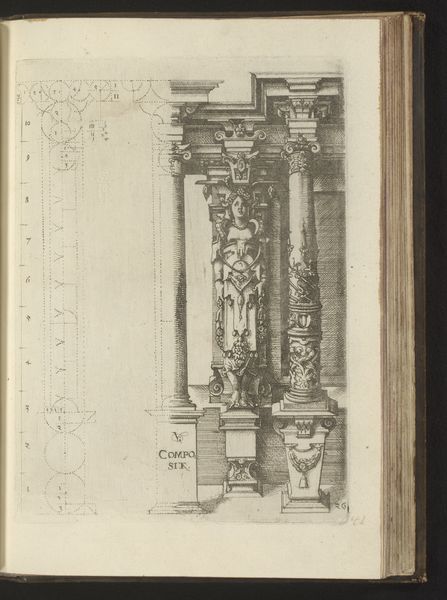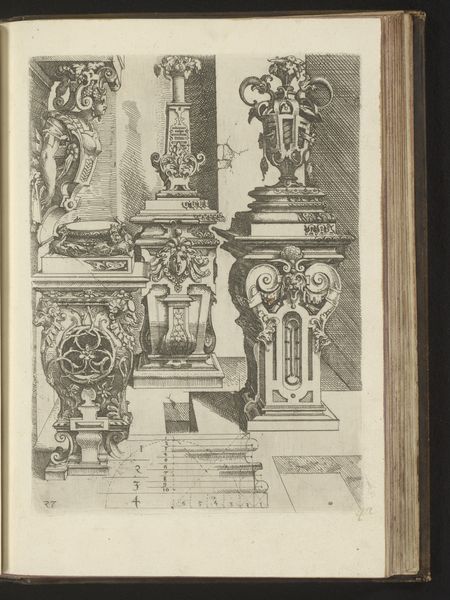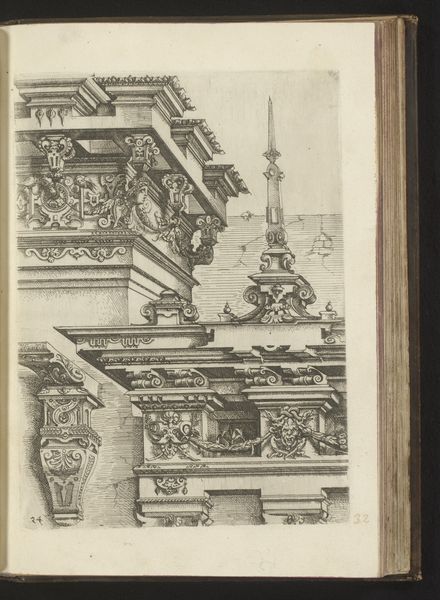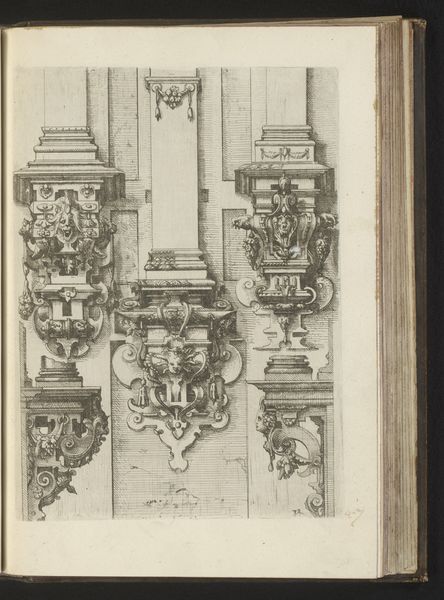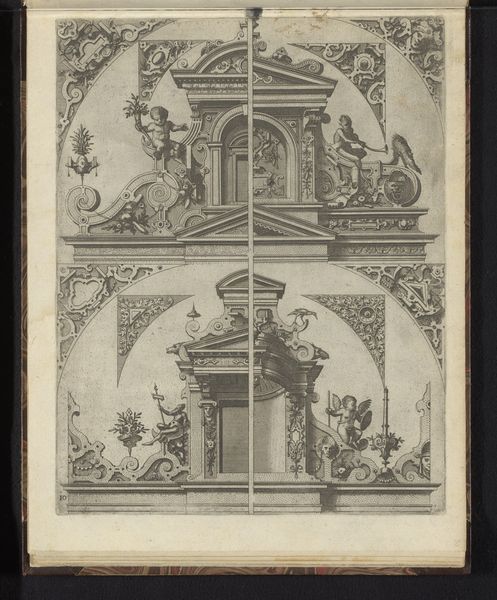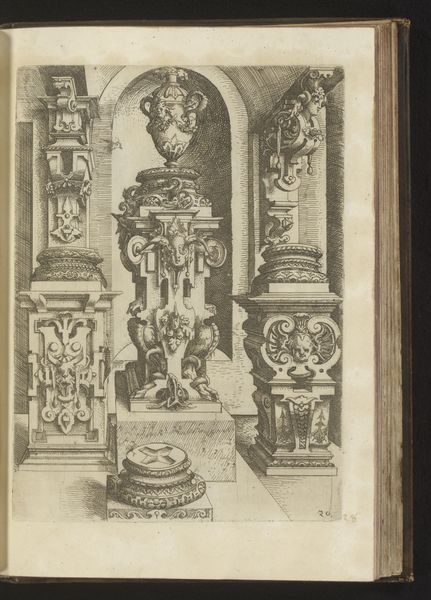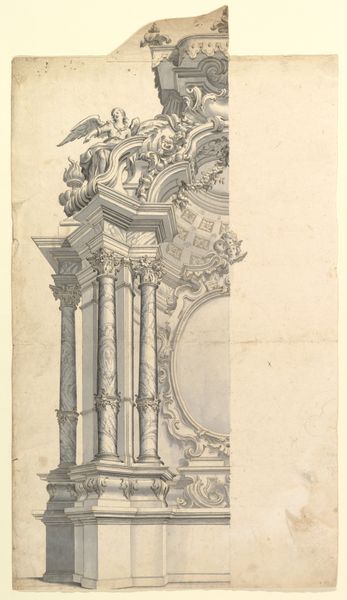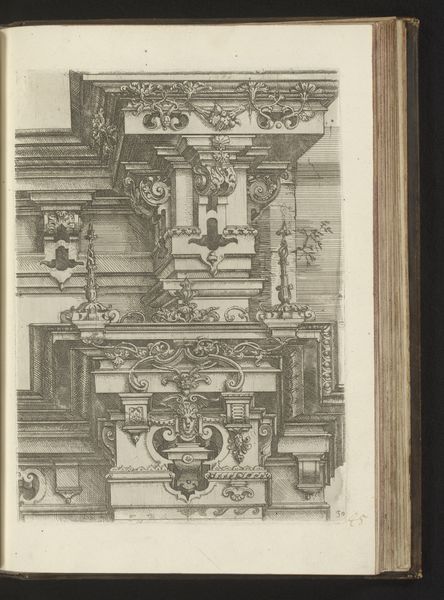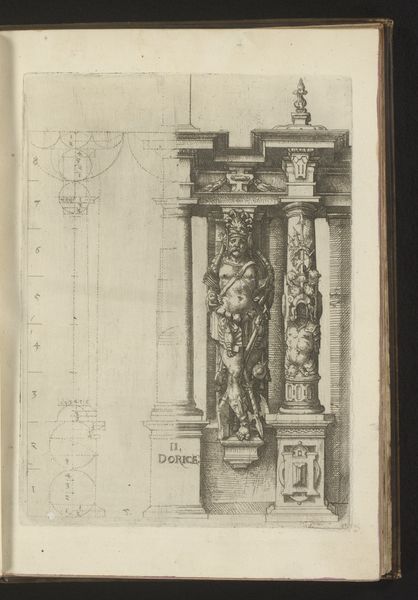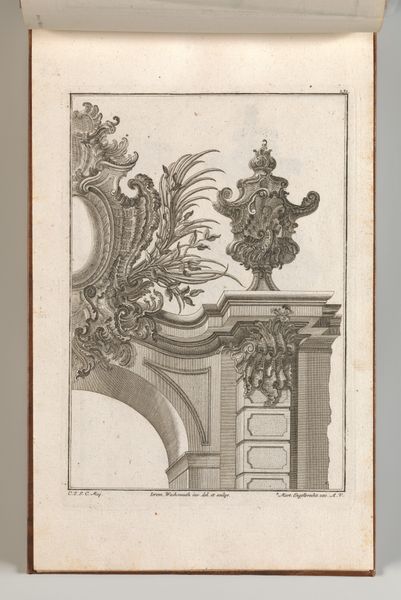
Verhoudingen van een kapiteel en zes Korinthische kapitelen gedecoreerd met voluten en bladranken 1593 - 1595
0:00
0:00
drawing, ink, engraving, architecture
#
drawing
#
form
#
11_renaissance
#
ink
#
geometric
#
column
#
academic-art
#
engraving
#
architecture
Dimensions: height 255 mm, width 186 mm
Copyright: Rijks Museum: Open Domain
Editor: Here we have Wendel Dietterlin’s engraving, "Verhoudingen van een kapiteel en zes Korinthische kapitelen gedecoreerd met voluten en bladranken", created around 1593 to 1595. I'm struck by how meticulous and almost mathematical it seems, like a blueprint for fantasy architecture. What do you see in this piece that gives it historical significance? Curator: Well, consider the historical moment. The late 16th century was a period obsessed with classical ideals, but filtered through a Mannerist lens. These weren't just dry architectural studies; they were statements about power, knowledge, and access to a glorious past that European society sought to emulate and even surpass. Look at the details – the incredibly ornate decorations of the Corinthian capitals. Editor: Right, it feels like more than just a diagram. It's a celebration of architectural grandeur, or maybe even aspiration? Curator: Exactly. And this brings up an important point. Who had access to this kind of knowledge? Architectural drawings and treatises were expensive and required a certain level of education to interpret. So this image, like many others, served to reinforce a hierarchy – a visual representation of who held the keys to culture and influence. Editor: That’s fascinating. I hadn’t considered the political implications of something seemingly so technical. It also reflects how images themselves were commodities, symbols of wealth. Curator: Precisely. And remember, architecture in this era was deeply intertwined with patronage. Powerful families and institutions commissioned elaborate structures to project their authority. These drawings served as a way of envisioning that power before it manifested in stone and mortar. So, while beautiful and precise, these drawings are testaments to the socio-political framework. Editor: This really reshapes how I see this piece. It’s more than just architectural study, it’s a document reflecting the power dynamics of its time. Thanks! Curator: My pleasure! I have learned to explore artworks on many levels and it helps to ask why? in many contexts.
Comments
No comments
Be the first to comment and join the conversation on the ultimate creative platform.
